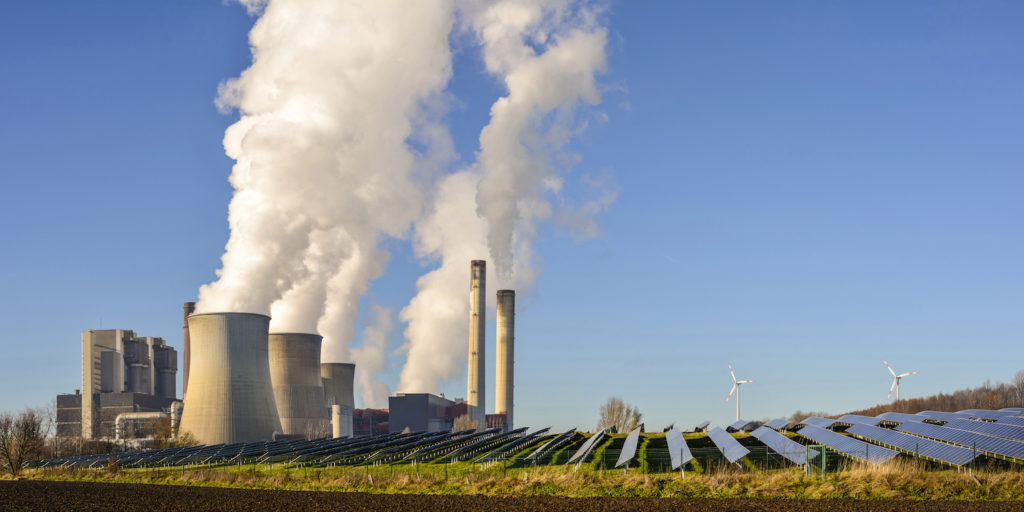Why worry about debts when the state keeps signing the checks?
Hong Kong-listed solar developer Panda Green revealed in its recently published first-half figures it is now almost 63% owned by three Chinese state-owned entities.
That would appear to suggest the shares subscription announced on August 2, entered into by state coal company Beijing Energy Holdings Co Ltd, may already have taken place. At the time the state bail-out was announced, no details were revealed of what sort of slice of Panda Green the fossil fuel concern would acquire or when.
With Qingdao City Construction Investment Group Co Ltd having come on board as a major stakeholder, according to the latest trading update, and China Merchants New Energy Group agreeing to bankroll activity until March, Panda Green’s strategy for addressing its huge debt pile is perhaps a predictable one.
More borrowing…
The board announced that it had already secured a further RMB420 million (US$59 million) of short-term borrowings since the end of June, had banked RMB43 million from a project equity sale last month and plans further project sales – such as the 96 MW of wind farms it has just parceled off.
On top of that, the directors stated the backing from state-owned China Merchants will continue until March 28 and they are confident that credit line can be extended. The board is seeking new long-term borrowing to refinance net debts of RMB17.28 billion – some RMB6.27 billion of which is due for settlement within a year – and is considering issuing up to US$500 million more offshore notes.
And then there is that mysterious non-binding MoU signed with Beijing Energy Holdings although, once again, no further details were revealed.
What was spelled out was the company’s current liabilities of RMB8.2 billion and current assets worth RMB6.4 billion. With just RMB222 million in the bank, those figures don’t add up.
… and more borrowing needed
However, Panda Green’s board appears unconcerned by the balance sheet. The directors say extra borrowing is needed to fund two sale and purchase agreements signed to spend RMB543 million acquiring stakes in project businesses; to flesh out the RMB1.02 billion in deposits paid for 775 MW of solar and wind project development rights; and to pay RMB211 million of construction commitments on a further 293 MW of solar generation capacity.
And that’s not all, as the unabashed directors’ update stated an intent to act upon solar project concession rights signed in June 2013 before they expire. If Panda Green intends to put the brakes on spending to address its debts there is little sign of such a strategy in the first-half report, not least because, from January to June, the company took on an extra RMB1.45 billion in equity financing and RMB1.9 billion in fresh borrowings.
The explanation could be in a stated intent to “deleverage” the business by investing in projects with “strategic business partners” to reduce capital expenditure. Or maybe it’s all to do with the 75% stake the company has in developing a 5 GW hydro power project in Tibet – where the People’s Government of the autonomous region holds the balance of shares. That project alone extends to more than double the 2,199 MW solar portfolio held by Panda Green in China at the end of June.
In terms of first-half performance, the developer posted a RMB114 million profit after generating 13% more electricity from projects which rely 99.8% on sales to the Chinese and Tibetan authorities. Revenue rose to RMB1.09 billion and EBITDA also went up from the same period of last year, to RMB978 million.
This content is protected by copyright and may not be reused. If you want to cooperate with us and would like to reuse some of our content, please contact: editors@pv-magazine.com.




By submitting this form you agree to pv magazine using your data for the purposes of publishing your comment.
Your personal data will only be disclosed or otherwise transmitted to third parties for the purposes of spam filtering or if this is necessary for technical maintenance of the website. Any other transfer to third parties will not take place unless this is justified on the basis of applicable data protection regulations or if pv magazine is legally obliged to do so.
You may revoke this consent at any time with effect for the future, in which case your personal data will be deleted immediately. Otherwise, your data will be deleted if pv magazine has processed your request or the purpose of data storage is fulfilled.
Further information on data privacy can be found in our Data Protection Policy.